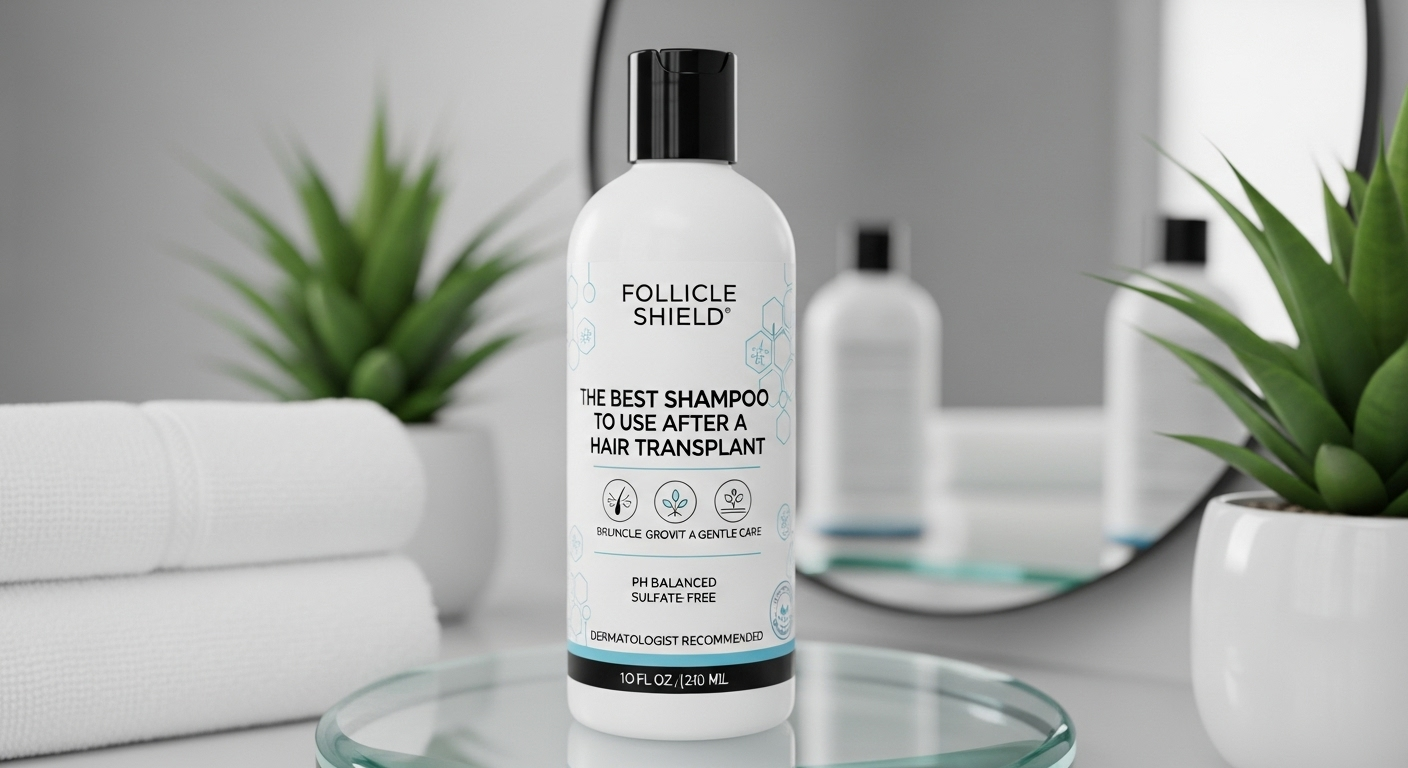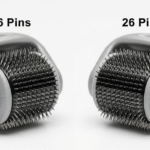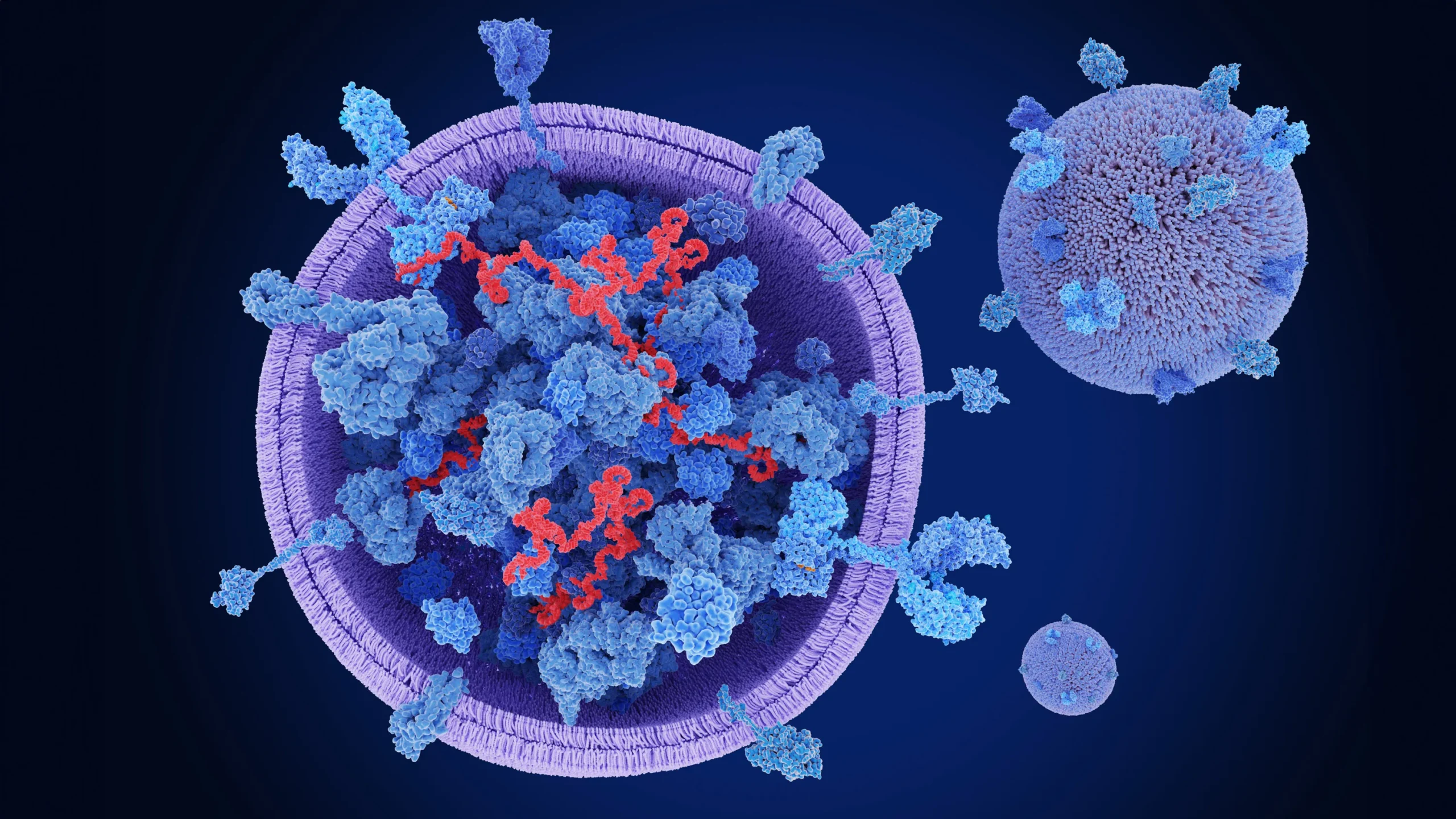After undergoing a hair transplant, caring for your scalp is just as important as the procedure itself. Using the right shampoo plays a pivotal role in ensuring a smooth recovery and optimal hair regrowth. If you’re wondering what the best shampoo to use after a hair transplant is, you’ve come to the right place. This …
After undergoing a hair transplant, caring for your scalp is just as important as the procedure itself. Using the right shampoo plays a pivotal role in ensuring a smooth recovery and optimal hair regrowth. If you’re wondering what the best shampoo to use after a hair transplant is, you’ve come to the right place.
This guide will provide you with everything you need to know about choosing the best post-transplant shampoo, how to use it correctly, and why it’s vital for your healing process.
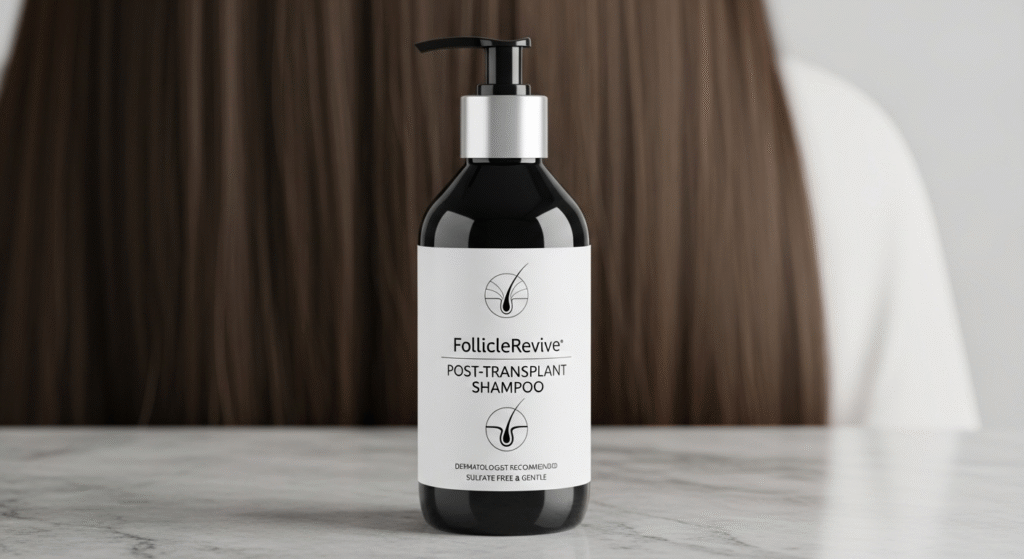
Understanding Post-Hair Transplant Care
Why Post-Transplant Hair Care is Critical
When you undergo a hair transplant, the transplanted follicles need a gentle, healing environment to thrive. Using the wrong shampoo or not following proper aftercare instructions can cause irritation, disrupt the healing process, and hinder hair regrowth.
In this crucial period, post-transplant care should focus on soothing the scalp, reducing inflammation, and ensuring that hair follicles remain nourished and protected.
What Happens During the Healing Process?
After a hair transplant, your scalp will go through various stages of healing. Initially, there may be swelling, redness, and scabbing as the new follicles adjust to their new environment.
Using a shampoo that is gentle, hydrating, and free from harsh chemicals is essential during this phase to minimize irritation and promote faster healing.
Following the right hair care regimen, including the use of the right shampoo, will ensure your follicles are not disturbed while they begin the process of regrowth.
Why You Need the Right Shampoo After a Hair Transplant
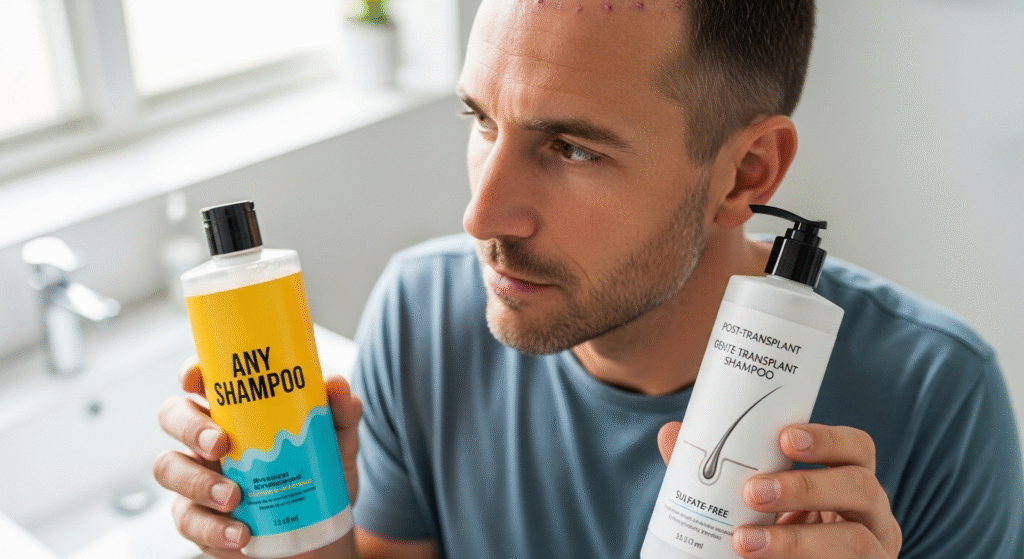
The Best Shampoo to Use After a Hair Transplant: Ingredients to Avoid in Shampoo
Choosing the best shampoo after a hair transplant goes beyond picking a gentle formula. It’s essential to avoid ingredients that may damage your delicate, newly transplanted hair. Look for shampoos free from:
- Sulfates: These harsh detergents can strip your hair and scalp of essential oils, causing dryness and irritation.
- Parabens: These preservatives can clog pores and interfere with hair follicle health.
- Alcohol: Alcohol-based shampoos can dry out the scalp and slow healing.
How Shampoo Can Promote Healthy Hair Growth
The right shampoo can help create a healthy scalp environment, which is crucial for hair growth after a transplant. Gentle shampoos that cleanse without stripping essential oils help maintain scalp hydration and avoid disrupting the healing follicles.
Moreover, shampoos with nourishing ingredients such as vitamins and natural oils can encourage hair follicle stimulation and support new hair growth.
Shampoos That Are Gentle and Hydrating
When selecting a shampoo for post-transplant care, look for formulas that focus on hydration. Shampoos enriched with aloe vera, chamomile, or glycerin will keep your scalp moisturized and soothe irritation. These gentle ingredients help maintain an optimal environment for new hair growth and reduce the risk of scarring.
Top Shampoo Ingredients for Post-Transplant Hair Care
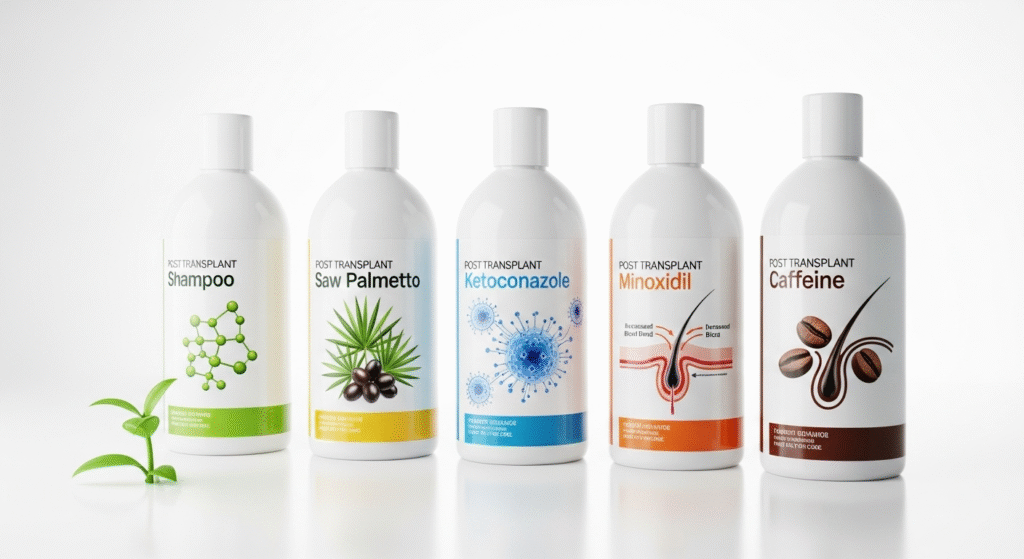
Nourishing Oils and Extracts
Some shampoos include beneficial oils like tea tree oil, jojoba oil, and aloe vera, which hydrate the scalp and provide essential nutrients to the follicles. These oils are known for their soothing properties and can help reduce any post-procedure swelling or irritation.
Antioxidants and Vitamins
Shampoos containing vitamins such as biotin, keratin, and vitamin E provide vital nutrients that support the strength and elasticity of hair. These ingredients are essential in rebuilding the hair shaft and promoting the health of transplanted follicles, ensuring they have the best chance to thrive.
Hypoallergenic and Non-Comedogenic Products
It’s critical to choose a shampoo that’s hypoallergenic to avoid triggering any allergic reactions on a sensitive scalp. Non-comedogenic formulas will prevent clogged pores and inflammation, which could hinder the healing process. These shampoos are ideal for post-transplant care as they minimize irritation and maximize the recovery process.
Best Shampoos to Use After a Hair Transplant
Top Shampoo Picks
Here’s a list of some of the best shampoos for post-hair transplant care that meet the criteria for gentle, nourishing products:
- Nioxin Cleanser Shampoo – Specially formulated for sensitive scalps, this shampoo provides a gentle cleanse without stripping natural oils. It’s enriched with vitamins to nourish hair follicles.
- Pura D’or Original Gold Label Anti-Hair Thinning Shampoo – A natural shampoo with biotin and DHT blockers, ideal for supporting hair regrowth and improving scalp health.
- Kérastase Densifique Bain Densité Shampoo – Designed for fine and thinning hair, this product strengthens hair fibers and enhances scalp health with nourishing ingredients.
- Viviscal Gorgeous Growth Densifying Shampoo – A gentle, sulfate-free shampoo that promotes hair growth while keeping the scalp moisturized.
How to Use Shampoo After a Hair Transplant
When Should You Start Shampooing After a Transplant?
You should start shampooing your scalp 2–3 days after the procedure. In the early days, your scalp may be sensitive, so it’s best to wait for any scabbing or swelling to subside before introducing shampoo into your routine.
Step-by-Step Guide to Shampooing
- Wet your hair gently with lukewarm water.
- Apply a small amount of shampoo to your palm and lather gently.
- Avoid massaging your scalp harshly. Instead, use your fingertips to lightly apply the shampoo.
- Rinse thoroughly with lukewarm water, ensuring no shampoo residue remains.
- Pat your scalp dry with a soft towel and avoid rubbing or scrubbing.
Common Mistakes to Avoid When Shampooing After a Hair Transplant
Scrubbing Too Hard
One of the most common mistakes post-transplant is scrubbing the scalp too vigorously. Scrubbing can damage the newly transplanted follicles and cause irritation. Always treat your scalp with care and use a gentle touch.
Using Harsh Chemicals
Avoid shampoos with harsh chemicals, as they can damage your delicate scalp and interfere with the healing process. Stick to gentle, moisturizing products that support scalp recovery.
Not Following a Proper Post-Transplant Routine
A proper post-transplant routine includes gentle washing, avoiding harsh chemicals, and following your surgeon’s aftercare instructions. Not sticking to this regimen can negatively impact your recovery and delay hair growth.
Expert Recovery Tips for Speeding Up Hair Growth After a Transplant
Avoiding Sweat and Physical Strain
Post-transplant, sweating can increase the risk of infection and irritate the scalp. It’s important to avoid strenuous physical activity for at least 2–3 weeks after the procedure to ensure proper healing.
Safe Recovery Timeline
A typical recovery timeline for a hair transplant is about 6–12 months, with full hair regrowth occurring in that period. Your surgeon will give you personalized advice based on your procedure and recovery progress.
Additional Tips from Hair Transplant Experts
- Keep the scalp clean: Cleanliness is essential to avoid infections. Wash your hair with the recommended shampoo regularly.
- Follow your surgeon’s advice: Every individual’s recovery is different, so it’s important to follow specific guidelines tailored to your needs.
FAQs
How long should I wait before using shampoo after a hair transplant?
It’s generally safe to start shampooing 2–3 days after your procedure, once any scabbing or swelling has subsided.
Can I use regular shampoo after a hair transplant?
No, it’s essential to use a gentle, sulfate-free shampoo after a hair transplant. Regular shampoos may contain harsh chemicals that can irritate your healing scalp.
When can I start exercising again post-transplant?
It’s recommended to avoid strenuous exercise for at least 2–3 weeks post-transplant to prevent sweating and irritation.
What are the signs that my shampoo isn’t working?
If your scalp becomes irritated, dry, or inflamed, it may be a sign that your shampoo isn’t suitable. Consider switching to a gentler, hydrating option.
Conclusion
Choosing the right shampoo after a hair transplant is crucial for promoting healing and encouraging healthy hair regrowth. By selecting products that are gentle, nourishing, and free from harsh chemicals, you can support your recovery and achieve the best results. Follow the expert tips and ensure you maintain a proper aftercare routine to keep your hair looking its best.
Ready To Take Your Next Step
Ready to take the next step in your hair restoration journey? Book a consultation with Dr. Uzma Irfan, an ISHRS-certified surgeon in Islamabad today to ensure a smooth and successful recovery after your hair transplant.

